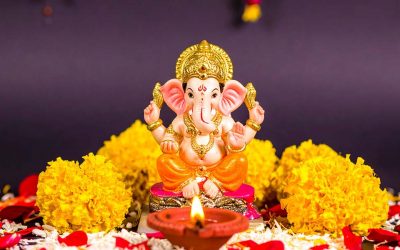Sacred Trees in Hindu Ritual: Nature, Spirituality, and Worship
India is one of those nations where nature is not merely loved — it is worshipped. In Hinduism, trees are so much more than a part of nature; they are living, divine beings that are integral to ritual, mythology, and secular life. For millennia, Hindus have revered trees not only for their ecological worth but for their rich spiritual and symbolic meaning as well. That very old practice is not extinct yet, and an understanding of it brings about an understanding of the interconnectedness of nature and spirituality in Indian society.
Why Trees Are Sacred in Hinduism
Hinduism is founded on the belief that life is interdependent — humans, animals, plants, and the like. Trees, particularly, are thought to be tremendous sources of life, refuge, cure and divine energy. Trees, according to scriptures like the Puranas and Vedas, are conscious, feel emotions, and are imbued with samsara, the cycle of birth, death, and rebirth. This belief creates a tremendous respect for plants, especially certain trees, which are directly associated with gods and goddesses.
Each sacred tree has its own divine energy and is normally home to a god. People conduct prayers, light lamps, tie sacred threads, and even conduct rituals at the trunk of such trees, regarding them as living temples.

Let us talk about some of the most important sacred trees utilized in Hindu ceremonies and why they are important.
1. Peepal Tree (Ficus religiosa) – Tree of Enlightenment
Also referred to as the Ashvattha or Bodhi tree, the peepal is sacred to India. Its heart-shaped leaves that whisper enigmatically when the air is still give it a mystical touch. The Bhagavad Gita has Lord Krishna’s words, “Among trees, I am the Peepal,” which refer to its spiritual importance.
It is linked with the Hindu Trinity: roots represent Lord Brahma, the trunk Lord Vishnu, and the leaves Lord Shiva. It is also worshipped by Buddhists because Lord Buddha achieved enlightenment under the canopy of a peepal tree.
Ritual Use: Red strings are tied around the trunk, the roots are irrigated, and prayers — especially on Saturdays to pacify Lord Shani and ease karmic burdens — are made.
2. Banyan Tree (Ficus benghalensis) – The Tree of Life and Immortality
The banyan, or Vat Vriksha, is a huge, ancient tree with a canopy of acres. Symbolically, it stands for immortality, shelter, and wisdom that never fades. Its aerial roots and continually branching limbs speak of boundless life and growth.
Lord Vishnu resides in its bark, Lord Brahma in its roots, and Lord Shiva in its branches, according to Hindu mythology. The banyan tree is the focal character of Vat Savitri Puja, in which married women worship under the tree for the long life of their husbands by tying sacred threads around its trunk.
Did you know that The Great Banyan Tree of Kolkata is one of the largest and oldest trees in the world!
3. Tulsi (Ocimum sanctum) – The Goddess in a Pot
No roll call of sacred trees in Hindu cultic life would be complete without the mention of Tulsi, or holy basil. Though a plant, Tulsi is taken to be an avatar of the Goddess Lakshmi, wife of Lord Vishnu.
Each Hindu home keeps a Tulsi plant, typically in a pot or separate altar. Tulsi Puja is done every day by devotees, and Tulsi Vivah, the wedding of Tulsi to Lord Vishnu, is celebrated.
Ritual Use: Tulsi leaves are employed in all Vishnu-related worship and are never offered to Lord Shiva. The plant is considered to impart purity, peace, and spiritual uplift.
4. Bael Tree (Aegle marmelos) – Lord Shiva’s favourite tree 
Also referred to as Bilva, the tree is particularly revered in the Shiva tradition. Leaves of the tree, trifoliate, are believed to symbolize the trident (trishul) of Shiva and three forms of God: creation, preservation, and destruction.
Bael leaves and fruits are commonly used during Shiva Puja, particularly in the Shrasta month.
Medicinal Applications: Ayurveda opines that every single component of the tree — leaves, fruits, bark — is blessed with medicinal properties, particularly for digestive and respiratory diseases.
5. Neem Tree (Azadirachta indica) – The Healing Goddess
Neem, bitter leaves and medicinal in nature, is revered as an incarnation of Goddess Durga or Shitala Devi. In villages, neem twigs are used in rituals to ward off evil spirits and protect the house from disease, especially in the case of smallpox epidemics.
In the eastern part of India, neem wood is used to carve the deities of the famous Jagannath Temple at Puri.
Ancient Traditions: Using neem twigs as toothbrushes, neem paste for skin ailments, and fumigating neem leaves for spiritual cleansing are all rooted in ancient Hindu traditions.
6. Banana Tree – A Ritual Necessity
While technically a herb, the banana tree is considered to be the same as a tree. It is the center of religious ceremonies. The fruit is offered to deities like Lord Vishnu and Goddess Lakshmi and prayed for, and the big leaves are utilized as biodegradable plates on which prasad (holy food) is placed.
In certain parts of the globe, the banana plant is revered during Kadali Vrata or utilized to create ceremonial gates during celebrations and weddings.
7. Ashoka Tree (Saraca asoca) – The Sorrow-Eliminating Tree
True to its name, Ashoka means “without sorrow.” Evergreen in nature, it is associated with Kama Deva, the God of love. It is said to ward off sorrow and usher in prosperity.
Ashoka trees are regularly planted in temples, and their orange-red flowers are used for pujas and altar decoration. Lord Buddha is said to have been born under the Ashoka tree, so it is also accorded significance in Buddhist cultures.
8. Mango Tree (Mangifera indica) – Symbol of Love and Fertility
Mango leaves are used to cover doors during weddings and celebrations in Hinduism for joy and prosperity. The tree is also symbolic of love, fertility, and prosperity.
A pot filled with water and with a coconut and mango leaves placed on it (also known as Purnakumbha) is a common sight at ceremonial doorways and is known to invoke divine power.
Sacred Trees:
A Preservation Beyond Rituals Today, with deforestation on the rise and global warming, the reverence accorded to trees by Hinduism is more relevant than ever. These sacred trees are not just symbolic; they offer shelter, food, medicine, and ecological balance.
The sacred trees of Hindu rituals are not just botanical wonders — they are spiritual companions. Whether the peepal is whispering ancient mantras, the tulsi guarding, or the banyan a towering sage who remains silent, these trees have shaped the surroundings as well as the spiritual perception of millions. Planting, defending, and honoring these trees is not a religious gesture — it’s moving toward a more peaceful world. The next time you spot one of these trees along the roadside, pull over. Offer a prayer or a quiet thank you. You’ll be part of a tradition that’s as old as it’s possible to be. Want to feel the spirituality of such holy trees? Visit a local temple, attend tree worship activities, or plant one in the community. Every tree planted is a prayer for the world.






